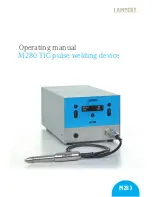
“Burglar”
,
“Home Omit”
&
“Home
Delay”
device mode, but not available
with
“Entry”
device mode. While
“24
Hour”, “Fire”
device mode are assignd
to have Instant attribute by nature.
StepA7.
Make a selection and press
“OK”
. The
screen will change to:
E n t e r z o n e N A M E
. . . . . . . . . . . . . + O K
PROBLEM?
16
Do not HESITATE to call us via our assistance hotline (at the end of the notice). Our technicians will have the pleasure to
help you make a perfect installation.
StepA8.
You are now invited to give a name or
location description to the device to help
understand system events. You can
enter up to 12 digits as you please for the
name followed by
“OK”
or just press
“OK”
for no name. Please see section
“Device Naming”
for details.
StepA9.
After the name programming has been
finished, the display will show you the
successfully added device with all its
setting requesting your final confirmation:
D C Z o n e 0 1 B I
I n
s
t a
l l ( O
K
? )
The example screen represents the
Open Contact is installed in zone 1 and it
is a
“Burglar”
Door Contact with an
Instant attribute.
Step A10.
Press
“OK”
, adding a Open Contact is
now completed, screen returns to the
“/-“
menu.
<
<
N
N
O
O
T
T
E
E
>
>
)
Zone number is automatically assigned
by the Control Panel.
)
Press
“
“
, all the learning/setting
processes having done will be ignored,
the screen returns to
“/-“
menu.
PIR
Detector
HA2000P
With Digitalized Adaptive Signal Processor (DASP)
algorithm enables this PIR to pick up movements
within an assigned area and signals the Control Panel
to activate the alarm if an intruder crosses its’ path of
detection.
The PIR consists of a two-part design made up of a
cover and a base. The cover contains all the electronics
and optics and the base provides a means of fixing.
The base has knockouts to allow mounting on either a
flat surface or in a corner situation with a triangular
bracket for corner mounting.
Provision for a tamper switch that will be activated
when the cover is detached from the base prevents
unauthorized access and removal from the mounting
surface. The PIR can also alert you to signal
communication problems and low battery situations.
The PIR is designed to give a typical detection range of
12 meters when mounted at 2 meters above ground.
z
Identifying the parts.
7. Test Button aka LED indicator
It is the test button and also doubles as the LED
indicator. The test button is used for testing the
radio performance and for learning purpose. The
LED indicator is used to indicate the status of
system.
8. Tamper
Switch
The Tamper switch protects the enclosure from
being opened.
9. Battery
Insulator
10. Corner mounting bracket
z
Supervision Function
When the PIR is in Normal operation mode it
will conduct a Self-test randomly by transmitting
a supervisory signal once between every 20
minutes to 50 minutes
















































